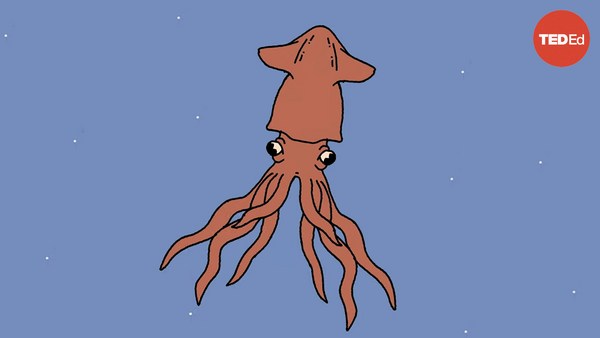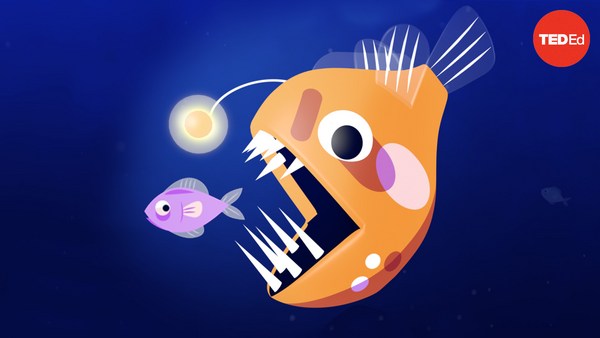In 1873, two fishermen off the coast of Newfoundland glimpsed what they thought was a submerged shipwreck. But when they probed the mass, it moved— and huge serpentine appendages soon besieged their boat. One fisherman took an axe to the animal, and it disappeared in a cloud of ink. What remained were two long limbs— definitive evidence in a collection of clues that would only continue to grow.
Over time, it became clear that giant squids were more than mythical monsters. People found sizable specimens washed ashore, caught in nets, and at the sea’s surface, and observed sperm whales with sucker-shaped scars and large beaks in their stomachs. But it wasn’t until recent decades that scientists actually found living giant squids in their natural habitat. So, what do we really know about these creatures? Well, interestingly, one thing we've gathered is that they might not even be the biggest squids out there.
There are hundreds of squid species inhabiting almost all parts of the ocean, ranging from the size of a thumbnail to more than seven times the length of a human. All squids are carnivores and share the same basic body plan, including a muscular mantle that covers their internal organs, a sharp beak, eight arms, and two tentacles specialized for capturing prey. The smallest squids eat things like tiny shrimp, while larger ones can feast on fish using their powerful beaks. The Humboldt squid’s bite force, for example, is strong enough to shatter Kevlar plates. And the suckers on the giant squid’s long, clubbed tentacles are encircled by sharp, teeth-like protrusions that help them grip prey like deep sea fish and other squids. Giant squids live in the cold, dark, high pressure twilight zone. It's extremely unlikely you'd ever encounter one, since you'd be very out of your depth down there.
We don’t know exactly why giant squids are so big— but the phenomenon fits with a pattern of deep-sea gigantism, where certain deep-sea species dwarf their shallow-living relatives. Perhaps because food down there is scarce, large animals that can cover more ground and store more food are favored. Giant squids’ size could also give them an anti-predator advantage, while the deep’s cool temperatures help them manage their metabolic rates.
Innovations over the past 150 years— from dredges and bathyspheres to untethered and remotely operated submersibles— have enabled peeks into the deep. And yet, it wasn’t until 2004 that researchers actually saw a giant squid in its natural habitat. Then finally, in 2012, scientists lured a giant squid and got it on video. They used a stealth camera system fitted with a device mimicking a bioluminescent jellyfish under attack. The system had no thrusters, keeping it unobtrusively quiet. And it only projected beams of red light— undetectable to most deep-sea dwellers. Both encounters revealed that giant squids are not sit-and-wait predators, as previously suspected. Instead, they’re active hunters that use their basketball-sized eyes to stalk their prey before projecting their tentacles and snatching animals up to 10 meters away.
But many questions still stand. We know sperm whales eat giant squids, but it’s unclear how fierce the fight is and if the squids ever stand much of a chance of escaping. Extrapolating off the number of giant squid beaks in whale bellies, one estimate placed the global giant squid population at around 4 million. It seems they mate when a male injects sperm packets into a female’s arm— but exactly how they find each other and what happens after are uncertain.
Giant squids are globally distributed, but they’re mostly missing from the planet’s polar regions, one of which happens to be where another humongous squid species lurks: the elusive colossal squid. Far fewer specimens have been collected, and they’ve yet to be seen or documented in their habitat. But we know they’re from a completely different family than giant squid— evidence that gigantism independently evolved more than once among squids. Their limbs are shorter than giant squids’, but their mantles are larger, making them up to twice as heavy. And unlike the giant squid’s toothy tentacles, colossal squids have hooked, swiveling sucker barbs. Much remains mysterious about these animals. But we know they’re down there, guarding their secrets in the deep, dark sea.


